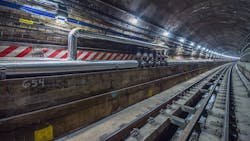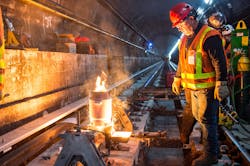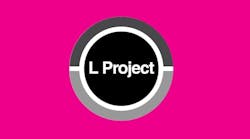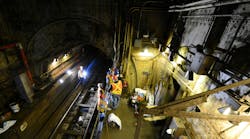New York MTA completes one “L” of a tunnel project
A multi-year project to rehabilitate the Metropolitan Transportation Authority’s (MTA) L Tunnel has been completed three months ahead of schedule and $100 million under budget.
The tunnel rehabilitation is part of a larger L Project, which consists of train capacity improvements and station capacity and accessibility improvements. The Canarsie Tunnel, which carries the L trains connecting Manhattan and Brooklyn, was one of nine tunnels to sustain significant damage following Superstorm Sandy in 2012.
With the added challenges of pushing the tunnel project toward completion during the COVID-19 pandemic, MTA Construction & Development (C&D) implemented several health and safety projections for employees and contractors. These included the launch of a daily reporting app, mandatory use of personal protective equipment, disinfection of contact surfaces, a ban on sharing tools and closure of common facilities among other steps.
With work completed on the tunnel rehabilitation, L train service resumed its previous service schedules with adjustments under the MTA Essential Service Plan on Monday, April 27.
"Even in the face of this unprecedented global health crisis, the MTA delivered this project safely, months ahead of schedule, well under budget and with no shutdown of service,” said MTA Chairman and CEO Patrick J. Foye. “This innovative approach is further proof that the 'new' MTA is committed to doing things differently to the benefit of our customers.”
Originally, MTA had planned a 15- to 18-month shutdown of the tunnel to perform all the required work. However, the schedule was revised following New York Gov. Andrew Cuomo’s convening of a panel of engineering experts from Columbia and Cornell Universities, who made recommendations on a series of engineering methods to streamline the required repair work and limit the impact on L Train service.
"While New Yorkers continue to cope with the devastating impact of COVID-19, the L train project completion is timely proof that when we are confronted with a challenge, we can build back better and stronger - especially when we work together and think outside the box," Gov. Cuomo said. "Everyone said we had to shut down the tunnel for 15 to 18 months, which was going to be a massive disruption for thousands of New Yorkers who rely on the L train. We challenged those who said there was no alternative solution and as a result, today the MTA is delivering a more resilient tunnel with improved service that is ahead of schedule and under budget - all while averting a shutdown."
"At the new MTA C & D, our motto is 'faster, better, cheaper'. Thanks to the governor and his team of experts, the Canarsie Tunnel project was able to live up to those goals. We're finishing three months ahead of schedule, using innovative technologies and construction methods, and saving the public millions," said Janno Lieber, chief development officer and president, MTA Construction & Development.
Station capacity and accessibility work will continue through fall 2020 as part of the L Project. This work includes constructing three additional substations that will add up to 10 percent more power to the L line; constructing three new accessible platforms; improvements at 14 stations; and capacity projects at Bedford Av Station and 1 Av Station.
MTA provided a video of a virtual first ride through the newly rehabbed tunnel; the video can be viewed below.

Mischa Wanek-Libman | Group Editorial Director
Mischa Wanek-Libman is director of communications with Transdev North America. She has more than 20 years of experience working in the transportation industry covering construction projects, engineering challenges, transit and rail operations and best practices.
Wanek-Libman has held top editorial positions at freight rail and public transportation business-to-business publications including as editor-in-chief and editorial director of Mass Transit from 2018-2024. She has been recognized for editorial excellence through her individual work, as well as for collaborative content.
She is an active member of the American Public Transportation Association's Marketing and Communications Committee and served 14 years as a Board Observer on the National Railroad Construction and Maintenance Association (NRC) Board of Directors.
She is a graduate of Drake University in Des Moines, Iowa, where she earned a Bachelor of Arts degree in Journalism and Mass Communication.





